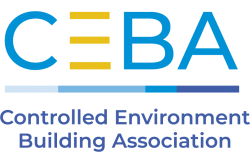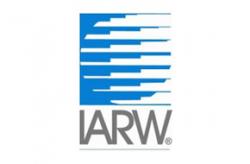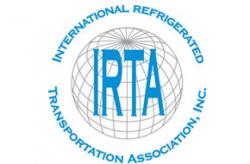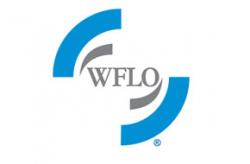CEBA Built by the Best Award Case Studies
The Sysco Nashville Freezer Renovation and Expansion
In March 2020, a tornado ripped through Sysco’s Nashville, Tennessee, freezer cooler and cold dock, and renovations were needed almost immediately.
Sysco reached out to the Williams Company-Southeast, and a site visit was immediately conducted. The structural damage was assessed and provisions made to “safe-off” the area for insurance of structural integrity, existing ammonia refrigeration evacuation, and plumbing, mechanical, and electrical conditions.
“Our analysis found that the building had incurred significant wind pressure damages, which resulted in a collapse of the freezer portion of the structure,” says Colin Williams, Senior Project Manager for the company. “In addition, the exterior IMP skin of both the cooler and freezer were found to be heavily compromised.”
After careful planning and coordination of multiple build-back options, Sysco and Williams Company decided to initiate a fast-tracked, design-build project to include a complete demolition and removal of the existing structure and foundations, with construction of a new 158,000-square-foot cooler, freezer, and cold-dock that includes a higher deck elevation to facilitate more storage at 35-foot racking heights.
Williams Company fast-tracked all facets of design, permitting, cost control, and construction to facilitate a 10-month total build schedule, from demolition to project completion, and the Sysco Nashville Freezer, Cooler, Cold Dock renovation and expansion was underway.
Sysco’s requirements were simple and two-fold – build back their cooler/freezer as quickly as possible and increase the elevation to provide higher racking space for increased product volume.
“Our strategy to accelerate the schedule was drawn from the design-build approach,” Williams says. “We could quickly produce a permittable set of documents and achieve a level of design within six weeks that allowed us to design, contract, purchase, and release the long lead materials and equipment such as roofing, insulated metal panels, steel joists and decking, and mechanical and refrigeration equipment while continuing with design, demolition, and site work activities.”
Time Element
Design began on May 20, 2020, construction mobilization about a month later, and substantial completion was executed by April 23, 2021. “The team created multiple solutions to ensure the project exceeded expectations,” Williams says. “For the client, the expectation was speed to delivery … they needed this facility back up and operational to mitigate their revenue losses and re-engage their employees to work.”
The first solution was to drive the project with a design-build approach, which helped meet the permitting deadline for an offered variance to tornado-affected facilities by the City of Nashville. This provided the client with an expedited permit approval to commence demolition and structural foundation work, in addition to saving them $250,000 in permitting fees that could be waived due to the variance.
“The next solution was to request and receive approval for third-party inspections to be utilized, which saved us a lot of time during the inspection process,” Williams says. “The Authority Having Jurisdiction did not have the typical manpower and efficiency during the pandemic’s shutdowns to handle all of their projects in a timely fashion. We continued to design through weekly meetings as construction of the structure proceeded, and we hit our design milestones. That allowed for the buyout and ordering of our remaining materials and equipment with no adverse effect to the schedule.”
Further, the company was able to use budget contingencies to accelerate its subcontractor base by adding manpower and rotating crews throughout the project to provide for a seamless seven-day work week.
Innovative Design
Some of the new technologies utilized included Matterport 3D Scanning; StructionSite 360 Camera & Software; FLIR Thermal Scanning Camera; drone based lidar and photogrammetry imaging; MyComply webbased documentation tracking; a custom COVID-19 trailer with temperature scanner and MyComply badge access.
“A unique design feature that you likely won’t see in other facilities was the design and construction of a tornado shelter for facility employees,” Williams says. “Sysco asked that we incorporate a tornado shelter into the design of the existing facility, but the location was challenging due to the type of construction we’d require.”
The facility contained an existing rail dock that Sysco used for storage and battery charging. However, the rail spur was no longer in use, and this area fortunately was located in a centralized space in the facility.
“We used this rail rock location and removed the sloped concrete, repoured a thickened 8-inch slab, and constructed the 1,100-square-foot tornado shelter with heavyduty, full-cell filled masonry with a cast-inplace concrete lid,” Williams says. “During design and construction, we suggested that this space be utilized for more than a tornado bunker, since that would mean it is only utilized during storm events.”
Since the client had ambitions to add a fitness center to the facility, Williams Company was able to convert the tornado shelter into a locker room/shower area and used the remaining adjacent space in the rail dock to construct the fitness center.
The project also included solutions to typical industry challenges. For example, the team installed a glycol under-floor heating system throughout the freezer slabs, and all refrigerated doors were designed and installed with heated frames and in-slab electric heating to prevent icing.
“We utilized pre-built refrigerated ammonia penthouses to both reduce the racking/lift conflicts that arise from belowdecking evaporator units as well as expedite our speed to delivery,” Williams says. “The pre-fabricated penthouses were built offsite and set in place, which reduced the duration of schedule time associated with the piping and electrical connections to the units.”
With an eye on sustainability, motionsensing LED light fixtures were installed in the new cold dock, cooler and freezer. All existing light fixtures were replaced with LEDs at the existing dry-side warehouse. And recycled, crushed, and reused demolished concrete served as an under-slab granular fill base for cooler, freezer and cold dock slabs on grade.
Overcoming Challenges
While March 2020 brought the tornado disaster to Nashville, that month also coincided with the surge of the COVID-19 pandemic, and the project was forged and finished at the height of the pandemic
Williams Company took extraordinary precautions to ensure the safety and protection of all office and field staff and its trusted design team members, subcontractors, vendors, and end users.
“To progress our design deliverables on the front end, we conducted all meetings with our architects, engineers, and clients using video conferencing,” Williams says. “To protect our teams in the field at the project site, we created a system for controlled access onto and off the jobsite. For document control that included safety data sheets, equipment checklists, safety training confirmations, daily reports, etc., we utilized MyComply software, which allowed our subcontractors and vendors to fill out all of their required paperwork through a webbased application.”
Workers received badges that provided access to the site upon completion of these requirements.
“In addition to MyComply software, we also custom-built our own access trailer that contained a temperature scanner, a badge scanner, and an access-preventing turnstile, all built within a connex box,” Williams says. “This ‘COVID’ trailer was positioned as the main point of entry and egress onto the construction site and worked very well at preventing access to anyone that was not safetyoriented or at risk with high temperature.”
Also, due to the pandemic and subsequent shut-downs, the team was challenged with the utility company and the building department. Responsiveness was lackluster due to most employees working from home.
“To limit the schedule impacts on delayed permit and inspection responses, we requested and received approval from the building department to allow the use of third-party inspections for all foundation and structural scopes of work,” Williams says. “We utilized PSI/Intertek for this service, and we gained valuable time on our schedule in doing so.”
Notable Accomplishments
Williams characterizes the team on the project as cohesive.
“Everyone knew their role and its importance to the overall success of the project, and we reinforced this hour by hour, day by day, and week by week through constant communication,” he says. “Communication and decisiveness kept the train moving quickly and in the right direction.”
Williams Company is most proud of the fact that a trusted client partner reached out to them in an emergency/disaster relief situation because they knew it would do everything in its power to help them.
“Our biggest accomplishment was getting their facility operational in record time,” Williams says. “That big accomplishment was the sum of many small achievements coming together through communication, teamwork, and dedication. We found a way to expedite the permit and save them fees; we figured out how to accelerate the schedule, we thought through and designed a tornado shelter, and then figured out a way to convert it into a gym and locker room … failure was never an option.”
Sistemas de Refrigeración Totales (SRT) was hired to design/build a distribution center in Mexico City, Mexico, for Mexideli, a marketer and importer of refrigerated and frozen gourmet products. The objective was to unite the client’s operations that included the construction of process areas, storage warehouses for frozen and refrigerated products and a warehouse for dry products and household goods in a single work point.
“They required more modern facilities, with a refrigeration system offering the latest technology guaranteeing the cold chain to the maximum, with a stable, sustainable and environmentally friendly system, achieving a safe and reliable work environment,” says David Rios, General Director of SRT. “With us, they knew they would have the support of a company that had experience in the field of turnkey projects.”
The new facility was designed to support the client’s growing gourmet cheese business and improve its manufacturing process at the same time. Mexideli also offers bread, juices, desserts, ice cream and seafood.
The project was the first distribution center in Mexico City with transcritical carbon dioxide (CO2 ) technology of this magnitude.
The work began about four months before the pandemic, and SRT was determined not to stop activity during this time. To keep its employees safe and stay on schedule, the company divided its workers up into different shifts over a 24-hour day, so less people were on the site at one time.
“The distribution center also functions as part of a training center for technicians and engineers in the use of CO2 , so they can gain practical experience and see a system of this capacity already in operation,” says Luis Armando Sanbria, Commercial Director of SRT.
Tech Innovation
The CO2 project for Mexideli shared the same philosophy and vision as SRT – to offer the best operating costs and the best energy efficiency, better management in the facilities and to reduce the carbon footprint in the environment.
“The great boom in the food industry, advances in food technology, the generation of new foods and ingredients and the modernization of distribution channels demand high quality and efficiency in refrigeration facilities,” Sanbria says. “The project carried out by SRT guarantees and contributes to the freshness and safety of the products, since this refrigeration system allows food to be maintained at a stable temperature, maintaining the cold chain, ensuring that the product arrives safely.”
In addition to reducing the emission of harmful gases and electricity consumption, the ideas guarantee investment returns for the client in a shorter term.
“The commitment of Mexideli and SRT is to offer the freshest product, the best service and comfort for its clients and collaborators,” Sanbria says.
Sustainable Matters
SRT designed the refrigeration by way of two direct expansion refrigeration plants with CO2 refrigerant in a transcritical system that works independently. This way, the cooling diffusers located inside the areas are stainless tubes and aluminum fins with axial flow fans strategically located to allow the best air circulation between the products.
“The use of this natural refrigerant in an air conditioning system helps reduce the system’s refrigerant load, avoiding synthetic refrigerants, and in the event of a leak, the impact is less,” Rios says. “It is one of the cheapest gases on the market compared to synthetic refrigerant gases.”
Additionally, a CO2 detection security system was installed, which will alert occupants of critical risks due to the presence of gas.
“A CO2 chiller will allow the delivery of cold water and hot water as part of heat recovery for air conditioning purposes in the office areas of the distribution center,” Rios says.
Other energy-efficient measures included the addition of state-of-the-art LED lighting with motion sensors, with special priority in corridors between storage systems and process areas with 300 Luxat 1m from the finished floor level; a 24/7 temperature monitoring system to record temperatures and store data for up to three months; and a heating recovery system through exchangers installed in the compressor racks.
“In addition to providing greater energy savings and contributing to caring for the environment, the LED lighting is beneficial for health since it promotes well-being and increases people’s productivity,” Rios says.
Overcoming Challenges
At the beginning of the project, SRT faced some complex issues as there was no example of a transcritical CO2 system of the size needed in Mexico City. The company also faced the challenge of needing to be able to obtain the necessary materials and spare parts that could work with this refrigerant. Additionally, SRT needed to train technicians and engineers in the use of CO2 to ensure everything was done properly.
“We needed to create a food distribution and production center with the lowest possible carbon footprint using existing technologies to obtain better results,” Rios says. “To guarantee the compliance and efficiency of the system, a synergy was carried out between the manufacturers of the equipment and the external consultancy of a European company with extensive experience in the sector of refrigeration systems with the use of CO2 .”
Combined with SRT’s experience in the instillation of refrigeration systems, it created a strong solution and exceeded client expectations.
Of course, having to deal with the COVID-19 pandemic four months into the work created its own set of challenges.
“At that time, we were 50% complete with the project with some products in transit from Europe to Mexico,” Sanbria says. “We had restrictions, and the work was stopped for a month in order to deliver the project on the established date. It was decided to start in two phases, allowing the client to start operations according to the original plan, and we achieved the goals without any complications.”
SRT held weekly meetings to update the client, and information was provided on the progress of each area, which meant the client would have a real understanding of what was going on – reviewing plans, engineering and equipment as the project was being executed.
According to Rios, the entire work team had all the information necessary to finish the work in a timely manner and that comes back to SRT’s strong hiring practices of bringing in trained personnel who are committed to being the best.
KEITH LORIA is an award-winning journalist who has been writing for major newspapers and magazines for close to 20 years, on topics as diverse as sports, business and technology.
EMAIL: freelancekeith@gmail.com
Source: Cold Facts July/August 2022 issue



